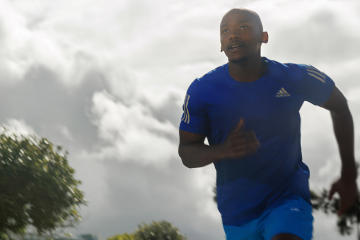Muscle soreness after a workout or DOMS (delayed onset muscle soreness) is the pain you feel in your muscles that usually comes a couple of hours or days after your workout.
Since some gyms have opened and some are opening next week, I felt that it would be good to prepare and manage the DOMS that will occur as a result of the long break away from the heavy weights, for most of us.
Why Muscle Soreness Occurs After Your Workout
When you train, especially in unusual methods for you or when your muscle contracts while lengthened (e.g. contracted bicep while straightening your arm doing a bicep curl), your muscle fibers and connective tissue undergo stress that causes micro-tears which repair during recovery.
When your muscles recover, they become stronger, but will swell up as a result of this recovery as it is like scars on your muscles. It can take 24-72 hours to recover or even longer if they have been overly stressed. I am proposing tips for you to recover from this or manage it better.
1. Sufficient Warm Up and Stretch
When muscles aren’t warm they can cause more pain during and post-workout. They can also result in injuries occurring which is more uncomfortable than Delayed Onset Muscle Soreness.
Warm up for at least 10 minutes, including dynamic stretches to ensure that your muscles are warm enough to take on the stress that you will be putting them under.
2. Stay Hydrated
Before, during and after your workout, you should continuously drink water or a drink that is high in electrolytes (coconut water, sports drinks etc.). Electrolytes are the minerals that help with the water, acid and base imbalances in your body. Your DOMS is also a result of your body being dehydrated and having lost these electrolytes.
An easy way to combat this is to carry a sports drink or water bottle with you when you go train to keep you hydrated or actually anywhere you go. Avoid drinks that are high caffeine post-workout as these promote the loss of fluids in your body.
3. Active Cool Down
An active cool down directly after your workout should be a low intensity activity that improves blood circulation in your body. This is because your muscles will get inflamed due to the micro-tears, so by having blood circulation it will provide energy to the muscle cells to recover.
Activities that you could do for an active cooldown:
- Pilates
- Yoga
- Stretching
- Walking
- Light jogging
4. Active Recovery
On the days that you will recover from your previous workout, take time actively recover. Go for a jog, a swim or cycle or the above examples on recovery days. This is for the same reason of improving blood circulation. Your muscles will be stiff and uncomfortable to move at first, but the warmer your muscles get, the easier it will be and the quicker that you will recover from your DOMS.
5. Ease Into The Workout
Since DOMS usually occurs when you haven’t trained a muscle group in awhile or the intensity is a lot greater than usual, take your time into a workout. Build up the intensity when you feel that you warm enough and strong enough to do it. Otherwise, you can induce injury if you rush into the intensity you last had, especially after coming back from a long break.
6. Massage
This one is not as sustainable as the others, that’s why I am putting it as a bonus option. Unless you have a partner that is willing to massage you every time you feel this pain, you can find a massage therapist that will ease the pain. Massages help release the tension in your muscles and help with blood circulation too.
Does Muscle Soreness Mean You Had a Good Workout?
I used to believe that when I had a good workout, I would feel it the next day. This can be true, but it does not mean you have to feel DOMS for it be a good workout.
What makes a good workout is one which helps you work towards your long-term fitness goals. Be it losing fat or building muscle and ultimately, happiness. Do not be hard on yourself if you don’t feel sore after your workout, putting in the work is good enough.
The Bottom Line
The training intensity you start with shouldn’t be one in which you are pushing towards your previous limits, especially if you’re just getting back into training that muscle group. At the same time, you shouldn’t do as many reps and sets as possible to try get back into the strength you had before on your first day back.
In weight/resistance training, I recommend starting with a weight that is 60-75% of your max and going for 3 sets of 12 and as you get stronger, you increase the weight or the intensity (reps and sets) when you can. Undergo a progressive overload when you get back into it routinely. In other forms of exercise, like cardio, take your time in building up the kilometres or intervals. It is all about continuous improvement.
Muscle soreness is something which may be inevitable when getting back in the gym this week or next, but having methods in place to reduce the pain can be the difference required to recover in a couple of hours rather than a couple of days.



1 Comment